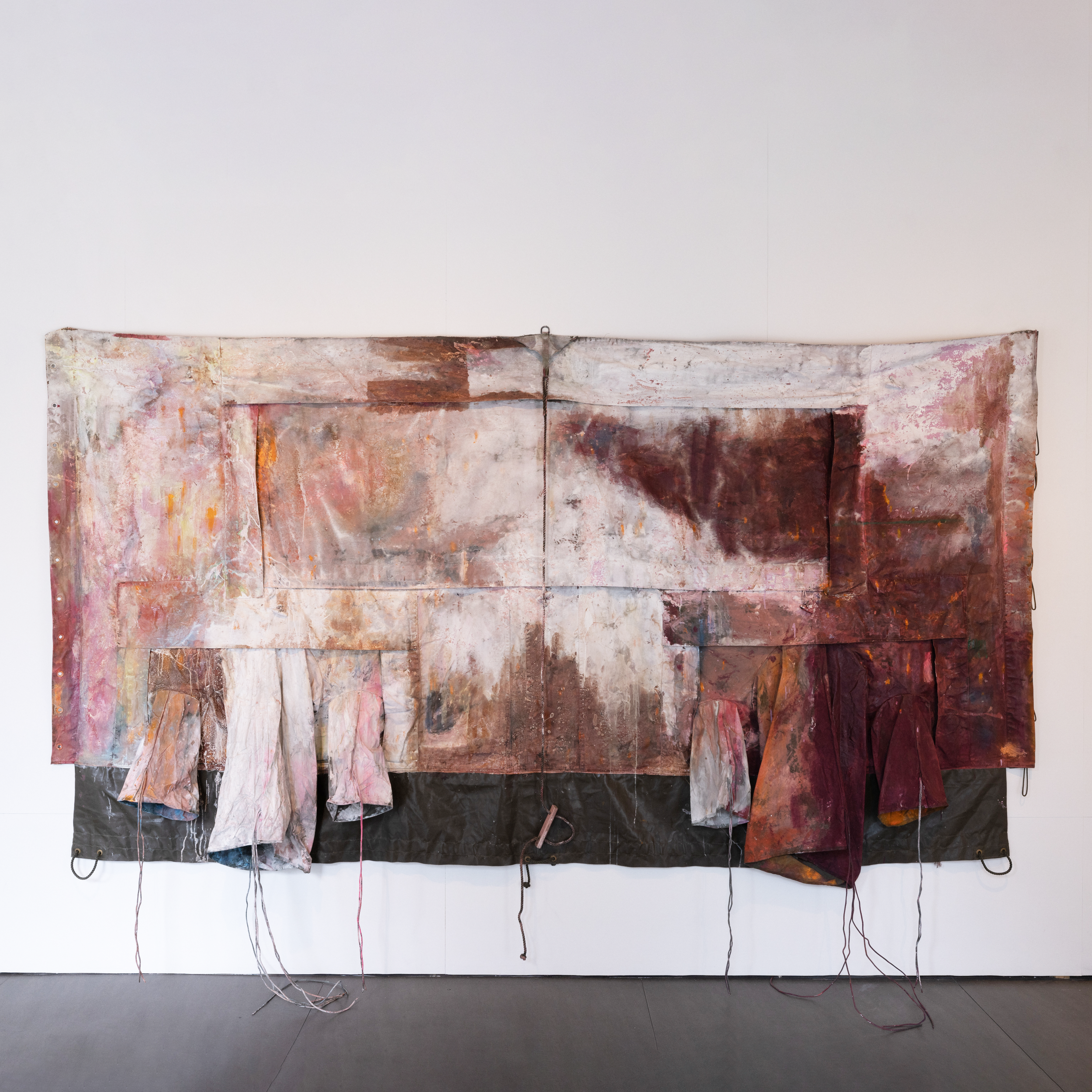GOD OF WAR
10.06.22 - 16.07.22
ARTISTS: ANYA CHARIKOV-MICKLEBURGH, DAVID COOPER, MARTYN CROSS, JO DENNIS, MICHAEL MACGARRY, OLIVER MCCONNIE, HUGH MENDES, JUSTIN MORTIMER, MIROSLAV POMICHAL,TAMSIN RELLY, PIERS SECUNDA, TIM SHAW RA, THOM TROJANOWSKI, BECKY TUCKER


TEXT BY MIROSLAV POMICHAL
There is something indecent about the idea of art whose subject is ‘war’. I mean those artworks which are accepted as art first: not the active tools of a government (propaganda) or the active tools of individuals (activism and anti-propaganda), for there is a clarity of purpose and a comforting partisanship that suppressed the repose of aesthetic appreciation and convulses into an intended reaction.
I mean the general, culturally accepted ideal of art, as something to make us stop, think, appreciate, and above all, contemplate. Whether this is in a hallowed hall whose chiselled entablatures contain the names of benefactors (for a while), or a pale space in a bustling city environment, carving out a few cubic metres of silence and space within which to cocoon the artwork.
There is something indecent in the idea of contemplating a work of art whose subject is ‘war’. Is it supposed to make you do something – act on something? Does it make you feel guilty for your fortune, and so betray your fine intentions of making time to have a cultural experience and support artists? Does it make a mockery of contemplation itself, presenting the viewer with the kind of imagery by which the contemplative mind is outraged? And, most pressingly in terms of purpose, is it even necessary, when we all know that war is a horror, and we are reminded of it daily in a multitude of ways?
The problem is one of depiction. It is of course, impossible to depict ‘war’ in its comprehensive entirety. For much of humanity’s cogent existence, artists did not really depict war. They depicted battle, or those preparing for it, emerging from it, marked by it. The individual hero, victim, strategist, patriot, parent, child, which represented a type of character in the face of war. Sometimes, battles themselves were depicted where the individual is subsumed into a grand view of a battlefield. The 17th and 18th centuries are the golden age for these, but Altdorfer’s 1529 Battle of Alexander at Issus is a good early example, since in the image so clearly the actions of mere men are subsumed by the wave-like rippling of their undulating combined body, reflecting the light of both the sun and the moon suspended lantern-like in a visionary sky. It becomes symbolic, it becomes a thing of beauty. And so it is, perhaps indecent, drawing pleasure out of pain.


It would be wrong to state that the past glorified war. The devastating side effects of it, however, were handled differently from the conventional modern, ‘accurate’ depictions. In a way that deserves our attention, the dark side of war was embodied in personifications. Famine, poverty, death, disease, were depicted as rotting, emaciated, skeletal figures, ravaging households and villages, as demons incompatible with human reason. War itself, as the sower of these evil seeds, imagined as a huge winged serpent, darkening the land and sweeping through with fire and blood. This was the image memorably used by the Slovak poet Hviezdoslav in his Bloody Sonnets, written when World War I broke out. His provinciality and piety isolated him from modernist currents and thus liberated him from the lot of the other poets and artists of his standing – the Nietzschean elation and support for war, with its twisted hope of redemptive cleansing of old Europe.
The tale of the modern transformation of ‘war art’ has been told many times before, but bears quickly recounting to get us to the key problem of the present day. Tremors of conscience can be felt in the 19th century, when the horror and devastation of war, as caused by man, began to be depicted (though Goya is more like an eruption). But it was only the cataclysm of World War I which changed the entire paradigm. From that point onwards, artists were almost universally united in clearly stating their repugnance to war, and its causes and actors; a cry of protest that was as much artistic and human, as it was intertwined with the political. Art that gloried in war as such has been relegated to the realm of propaganda, sympathiser, opportunist.
War as such, then, is so universally rejected as an evil that, after World War II (and in some ways even during it), artists have gradually retreated from the subject, to focus on the struggle and, yes, the war within. The liberation of the means of art, and the absolute emancipation of the artist from any claims on them by others, have conspired to make artists focus on the war of being, on the human condition, of which war is just one lamentable factor. Even with outliers, such as Leon Golub, there is more written on his psychological intensity, and on himself as a curiosity (as all artists seem to be now), than on the wider context of his scenes of casual brutality in times of armed conflict.
Armed conflict itself, particularly the conventional, heavy, tactical, slow and degrading progress of tracked wheels quagmired in sleeping soil, has until now been a distant nightmare for “the West”, slowly morphing into dream. A realm of fantasy, the spiky and physical imagery of which has been compensated in some ways in actual fantasy art, games, films. How to WAKE from this dream, while savouring some of its now nostalgic content, is, I suppose, the question for the artists in this exhibition.





















